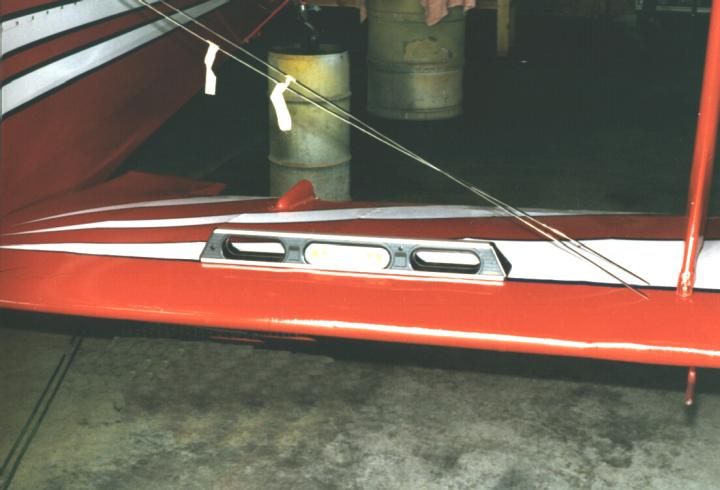Aircraft Construction, building the Pitts with a smart levelUsing a smart level as opposed to a bubble level in aircraft construction. Building the Pitts aircraft |
Pitts
Builder Page * Pitts Action Pictures * Yellow
Airplane Museum Index
 |
Photo by C. Jeff Dyrek
Plane Built By Roger Smith
|
|
|
|
| Now the bottom wings are set to the
proper dihedral angle using a level. This adjustment was made by
tightening or loosening the landing wires. Do you remember
where I said that I didn't like the method that we leveled the fuselage?
Well, this is why. We set the angle perfectly using the bubble level.
Later, we used a smart level and found that the wing dihedral angle was
off by two degrees.
Click Here's a quick story about bubble levels. My cousin is a highway engineer working for the state highway department. His responsibility is to check each job, mostly bridge construction, to ensure the work is going exactly to plan. One day he went to the hardware store and was checking bubble levels for accuracy before he bought one for his personal use. He would place the level on a shelf and look at where the bubble was in relation to the marks. He would then turn the level around 180 degrees and make the same measurement. If the level was accurate, the bubble would appear in the exact position regardless of which way the level was turned. Much to his surprise he had to go through about fifteen levels before he found one that was correct. I hope this illustrates the point. Bubble levels can be way off so to be smart, use a smart level. To make a short story long, I met a man at the Springfield, Illinois airport who had built a dragonfly. The plane was very nicely constructed. He said that every part was leveled perfectly. The first time he flew the airplane, he took off and the plane immediately required a full right aileron to keep the plane upright. He called the tower and said that he was going to stay in the pattern for a touch and go. When he released the aileron pressure the plane made a real nice left bank, perfect for pattern work. He flew around the pattern and brought the plane in for a landing. After wiping the sweat off of his brow, he took the plane back to the hangar and started making some more measurements and found that the wing had a 3/4 inch twist in it which caused the problem which could have led to a crash. Of course, it was obvious that he didn't follow proper high speed taxi test prior the the maiden flight. |
EAA
(Experimental Aircraft Association)
Chapter Listing
